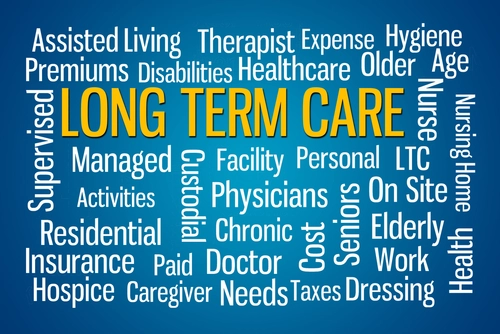Part B Insider (Multispecialty) Coding Alert
New PACE Update Focuses On Flexibility and Stability for Seniors

Your Medicare patients could get an all-new team treatment approach, thanks to the government’s latest PACE updates.
According to U.S. Census Bureau reports, the population of citizens over 65 is set to double over the next 30 years. The numbers are large, with an estimate of around 83.7 million seniors by 2050 due mostly to the aging baby boomer generation.
Quality, comprehensive healthcare has never been better in the U.S. with increased technologies, disease cures, and pharmaceutical discoveries. All these factors combine with the elevated population numbers to lengthen the longevity of Americans’ lives. CMS, in conjunction with the Affordable Care Act, have risen to the challenge of caring for aging Medicare patients with some enrichments in a new proposed rule to the Programs of All-Inclusive Care for the Elderly (PACE).
Background. Oftentimes, aging patients do not want to make the move to nursing homes or other care facilities as their health wanes. PACE provides assistance to these seniors, helping them live out the remainder of their days in their homes.
Latest statistics. “More than 34,000 older adults are currently enrolled in about 100 PACE organizations in 31 states, and enrollment in PACE has increased by over 60 percent since 2011,” a CMS fact sheet from August 11, 2016 states. With the evolution of health care over the past decade in addition to these rising PACE statistics, CMS decided to make the necessary changes to better serve the elderly with this new ruling, the first since 2006.
“Today, CMS proposed the first major update to the PACE program in a decade. This proposal will help the program reflect the latest advances in caring for frail elders and changes in the use of technology,” said Andy Slavitt, CMS acting administrator explained in an August 11 blog post. “The goal of this proposal is to strengthen beneficiary protections and provide PACE organizations with more administrative and operational flexibilities so they can do what they do best—caring for our nation’s most vulnerable individuals.”
Here’s What the New Rule Entails
The new proposal aims to expand the program and offer it to more beneficiaries, taking into account advancements made in the administration of health care in the past decade and the rise of non-physician practitioners. The changes are subtle but would provide a more comprehensive, team-based care for the participants with the new PACE add-ons.
Here are some of the PACE highlights:
-
Promotes care coordination between different providers with a team flexibility.
-
Open to “non-physician primary care practitioners to provide some services in the place of primary care physicians” and expand the program.
-
Requires PACE groups to follow Medicare Part D legislation.
-
Deters fraudulent behavior with new sanctions and punishments that may include termination from the program.
-
Provides the verbal ammunition to ensure that sexual, physical, and drug/alcohol abusers are never part of any PACE teams.
“Over the last six years, since the onset of the Affordable Care Act, we have been taking significant steps to care for more people, care for them better, and make health care more affordable,” Slavitt said. “But for us to be successful, we need to work hand-in-hand with patients and their families, physicians and clinicians, and other actors to support new approaches to care. Team-based models that put the individual in the center, like PACE, will be a vital part of the fabric of our system.”
What This Means to You
With the expansion and greater flexibility promised in the proposal, team members would be able to perform more roles in the coordination of care, an added benefit to both patient care and each provider’s bottom line. CMS hopes that reaching out to nonphysician practitioners as well will add value to the team and make the cooperation across health care spectrums more efficient.
The Federal Register ruling is available to read here https://www.federalregister.gov/articles/2016/08/16/2016-19153/medicare-and-medicaid-programs-programs-of-all-inclusive-care-for-the-elderly-pace, and CMS will accept comments on the proposal until Oct. 17, 2016.
Resources: For more information on Andy Slavitt’s blog post on PACE with a link to the PACE fact sheet, visit https://blog.cms.gov.
To take a look at the U.S. Census Bureau statistics on aging, visit https://www.census.gov/prod/2014pubs/p25-1140.pdf.
Related Articles
Part B Insider (Multispecialty) Coding Alert
- Affordable Care Act:
New PACE Update Focuses On Flexibility and Stability for Seniors
ACA implementations to PACE encourage embracing new technologies to protect the aging. Your Medicare patients [...] - Incident-To:
Watch Your Incident-To Claims When Your Physician Is Out of Office
Take a look at these points to refresh your staff on how to properly bill [...] - Reader Questions:
Know the Differences Between PT and Chiropractic Services to Avoid Denials
When referring patients to a chiropractor, make sure you understand what CMS covers. Question: In my [...] - Part B Coding Coach:
Don't Let Trach Tube Procedure Claims Get You Down
Expert advice on global days and bundling rules to ensure your trach tube claims are [...] - Physician Notes:
Couple Gets Prison Time for Masquerading as Physicians in Portable X-ray Scam
Plus: CMS Releases 2014 Part D Drug Data The use of portable imaging has skyrocketed [...]




